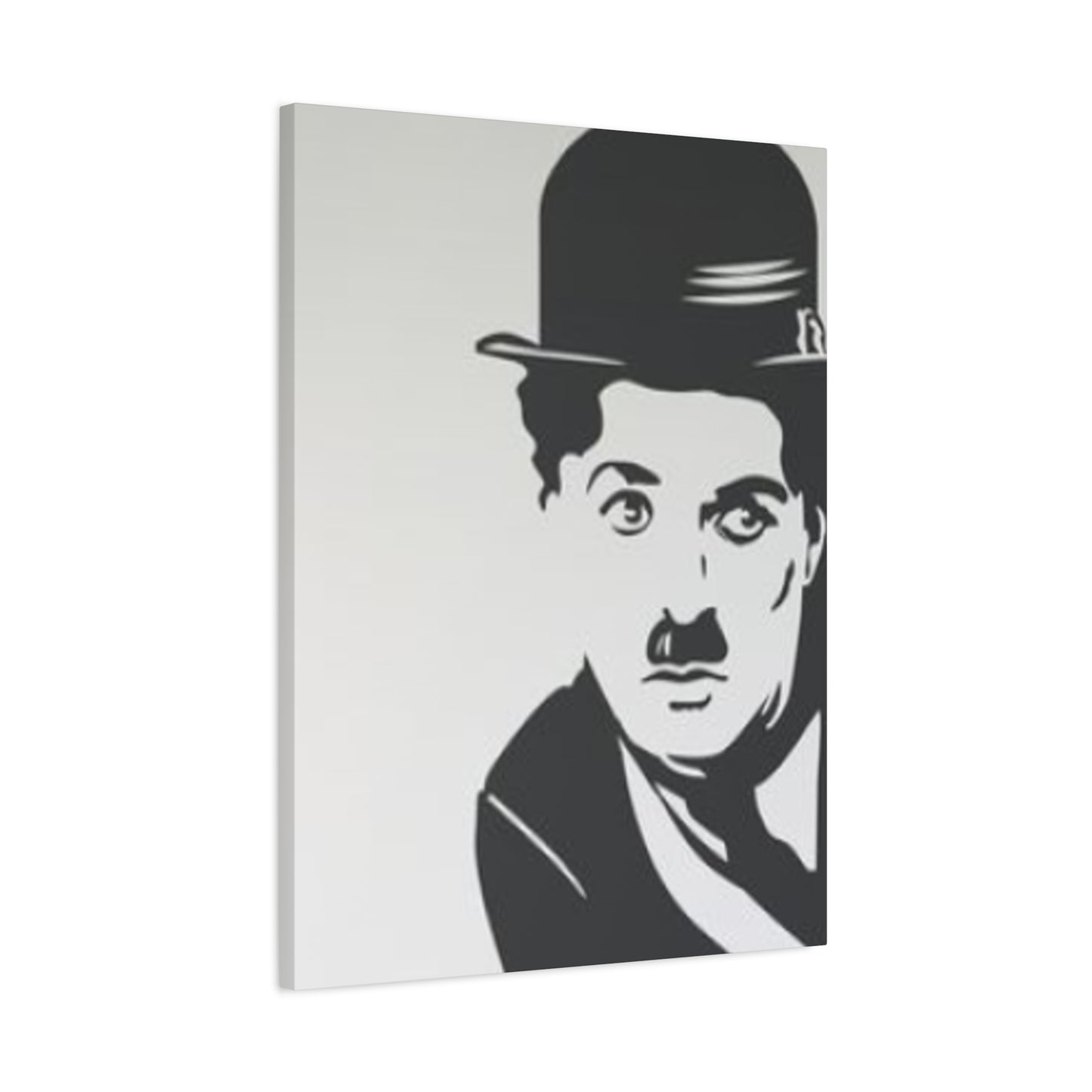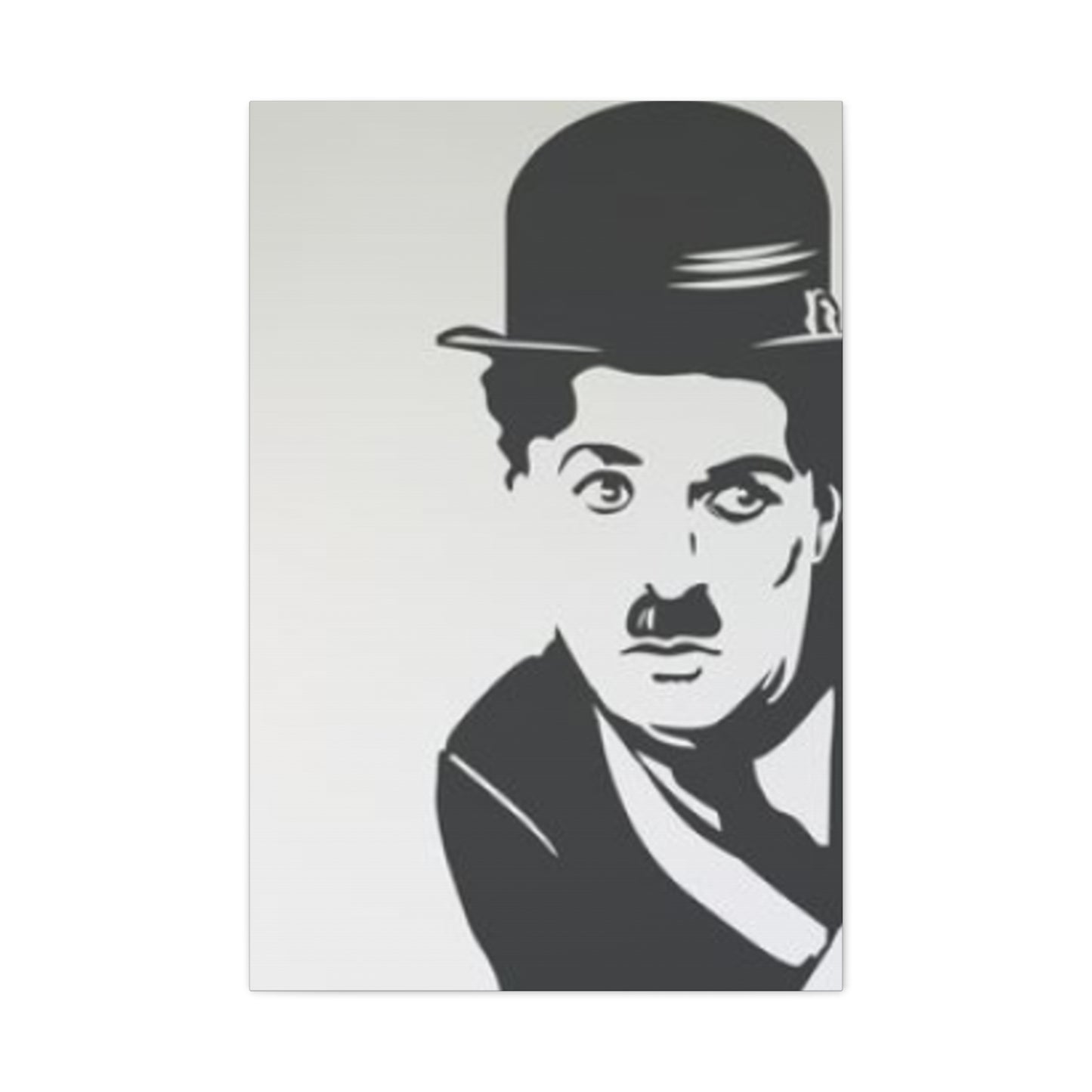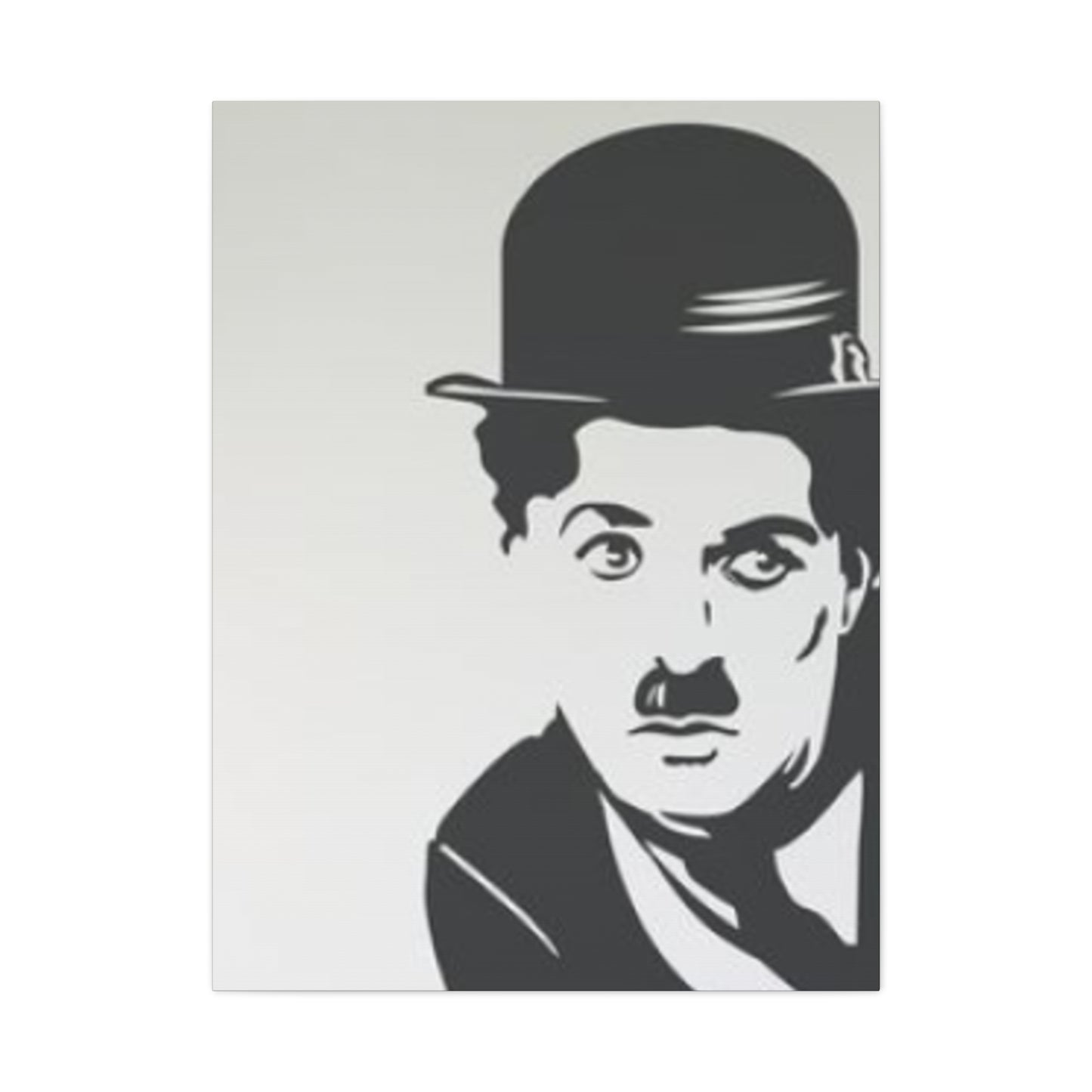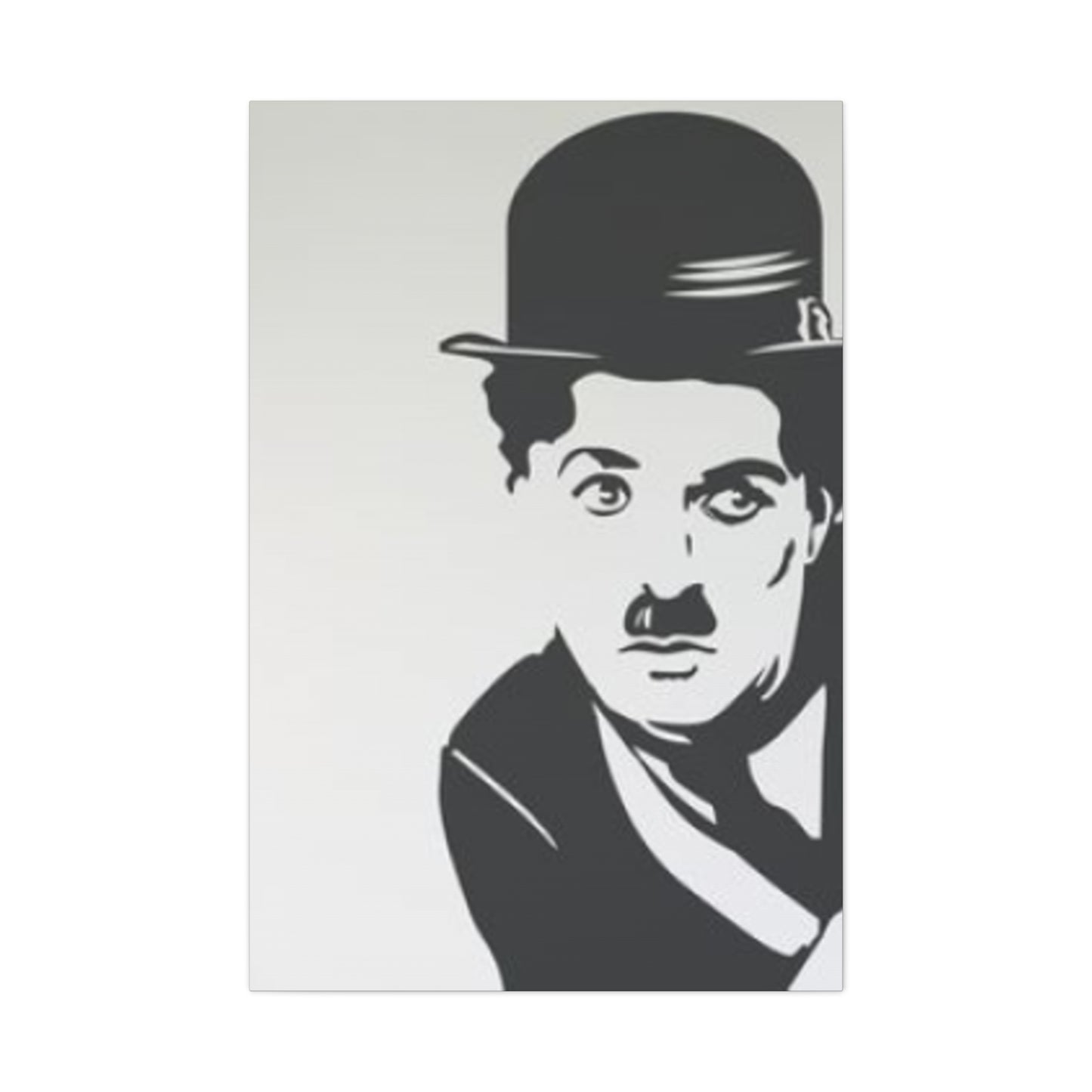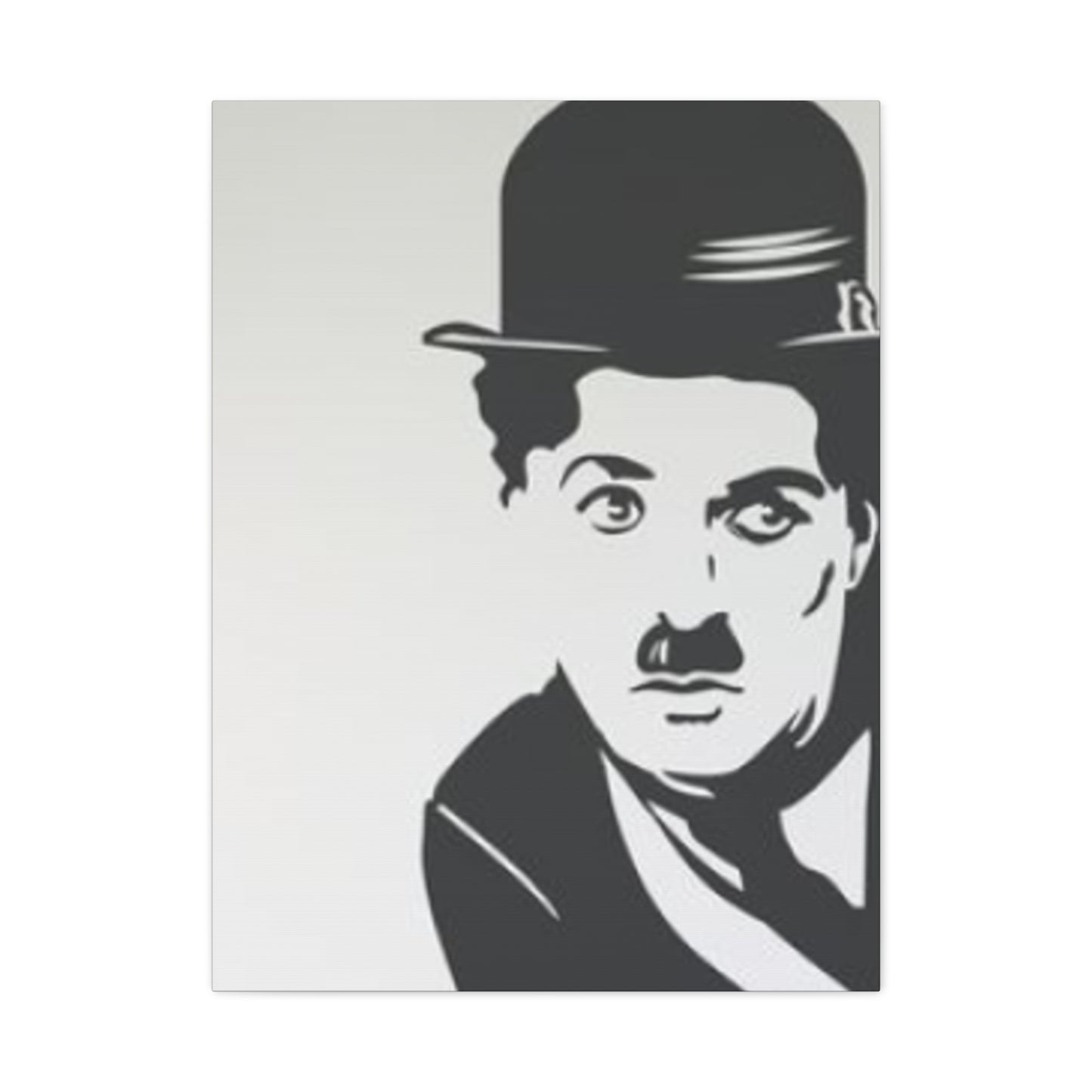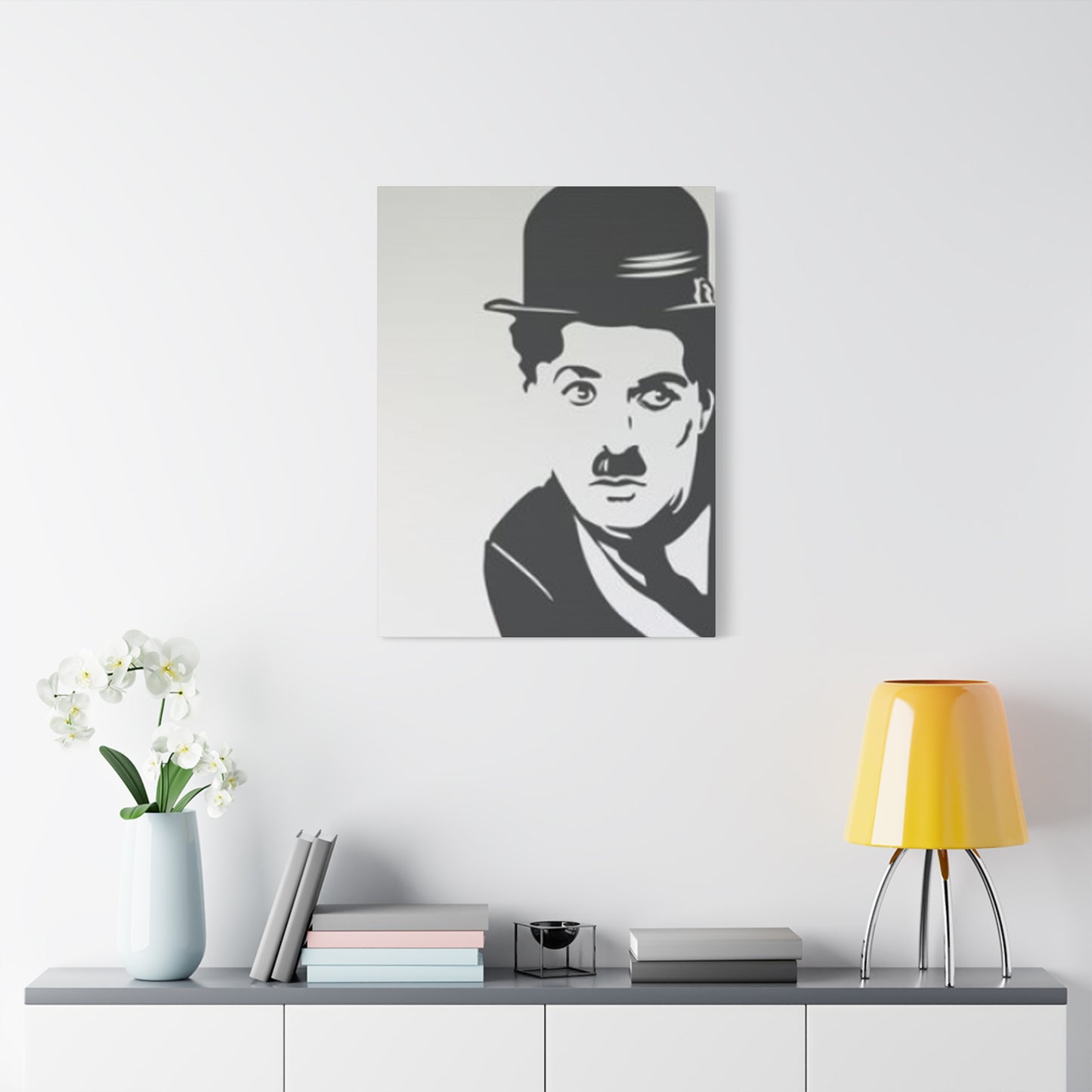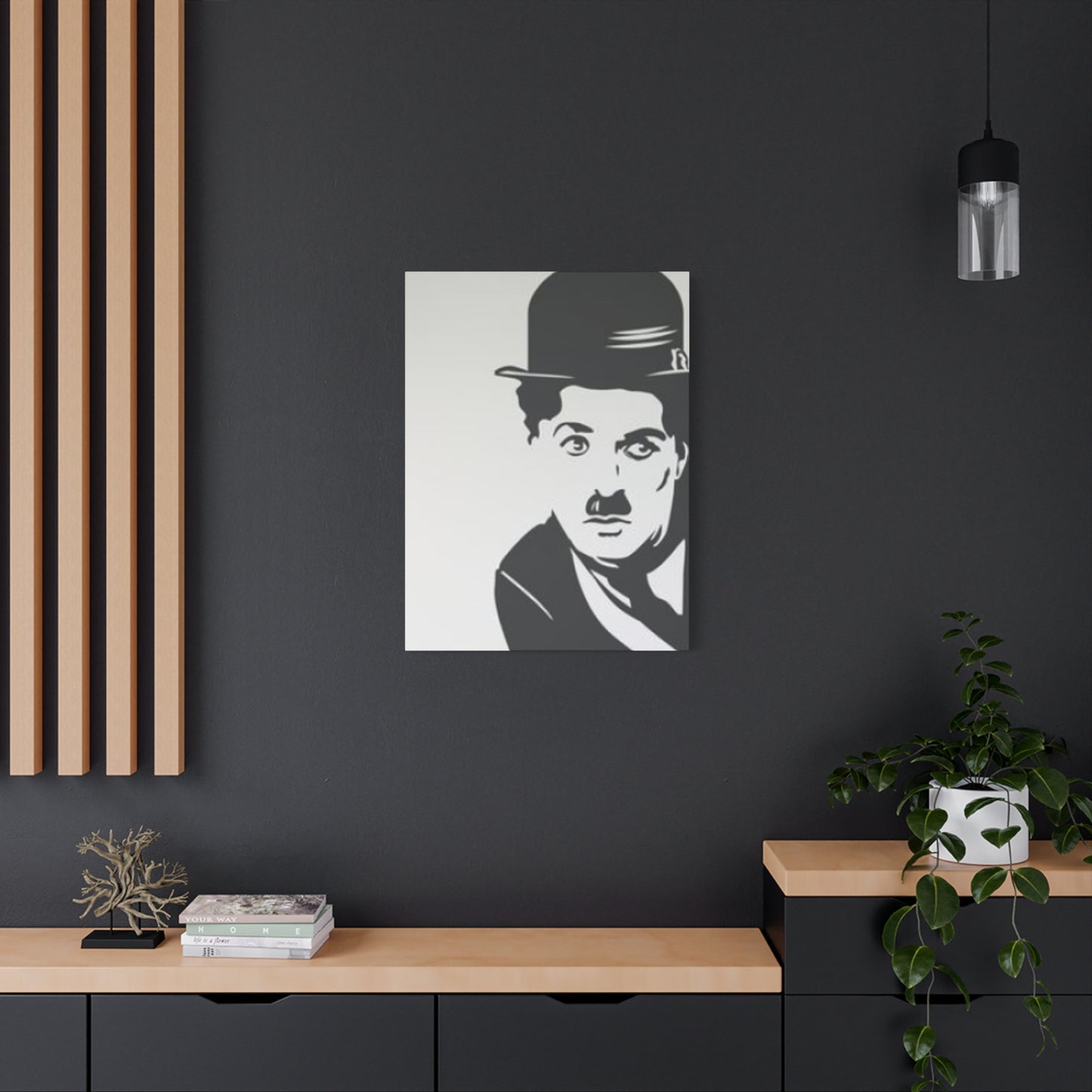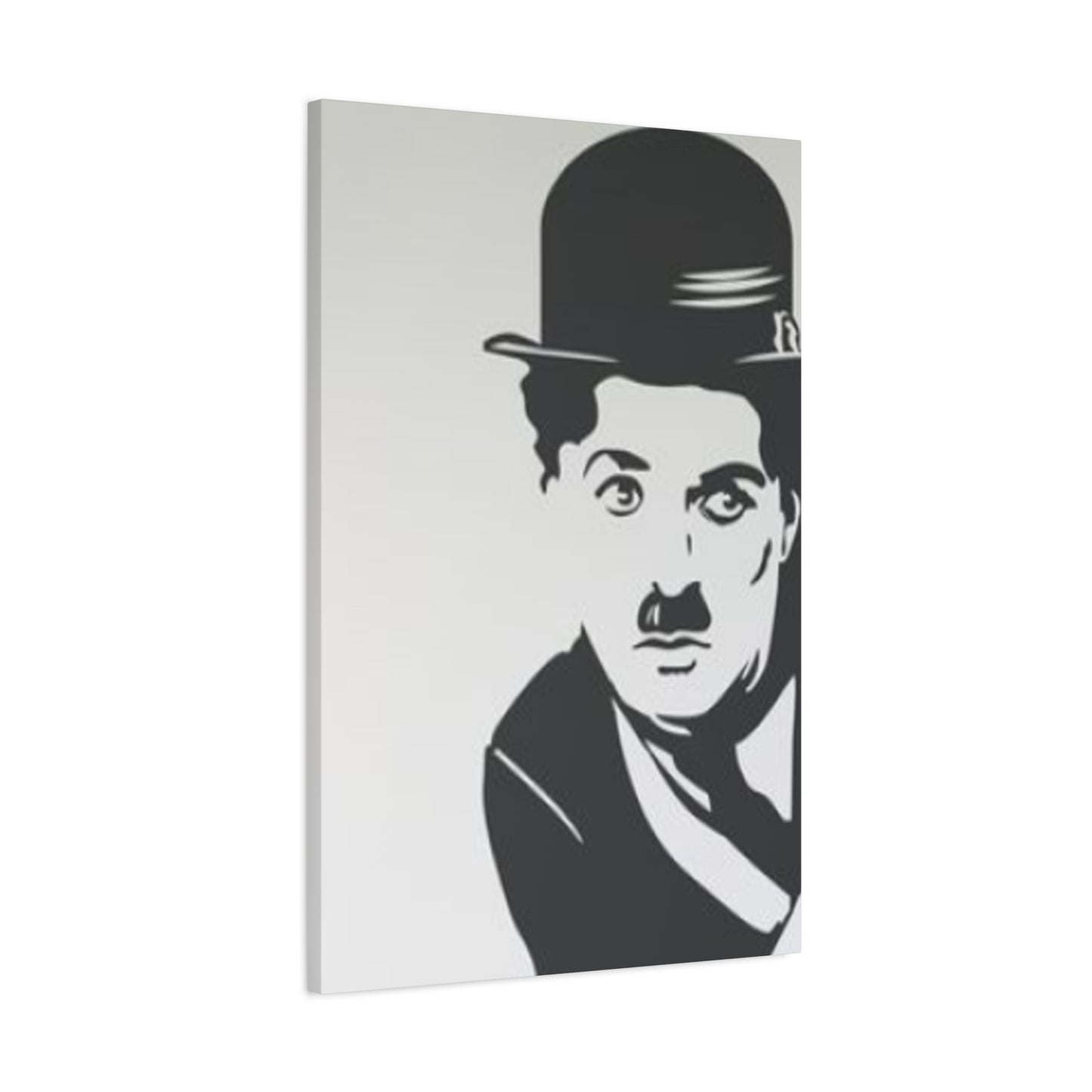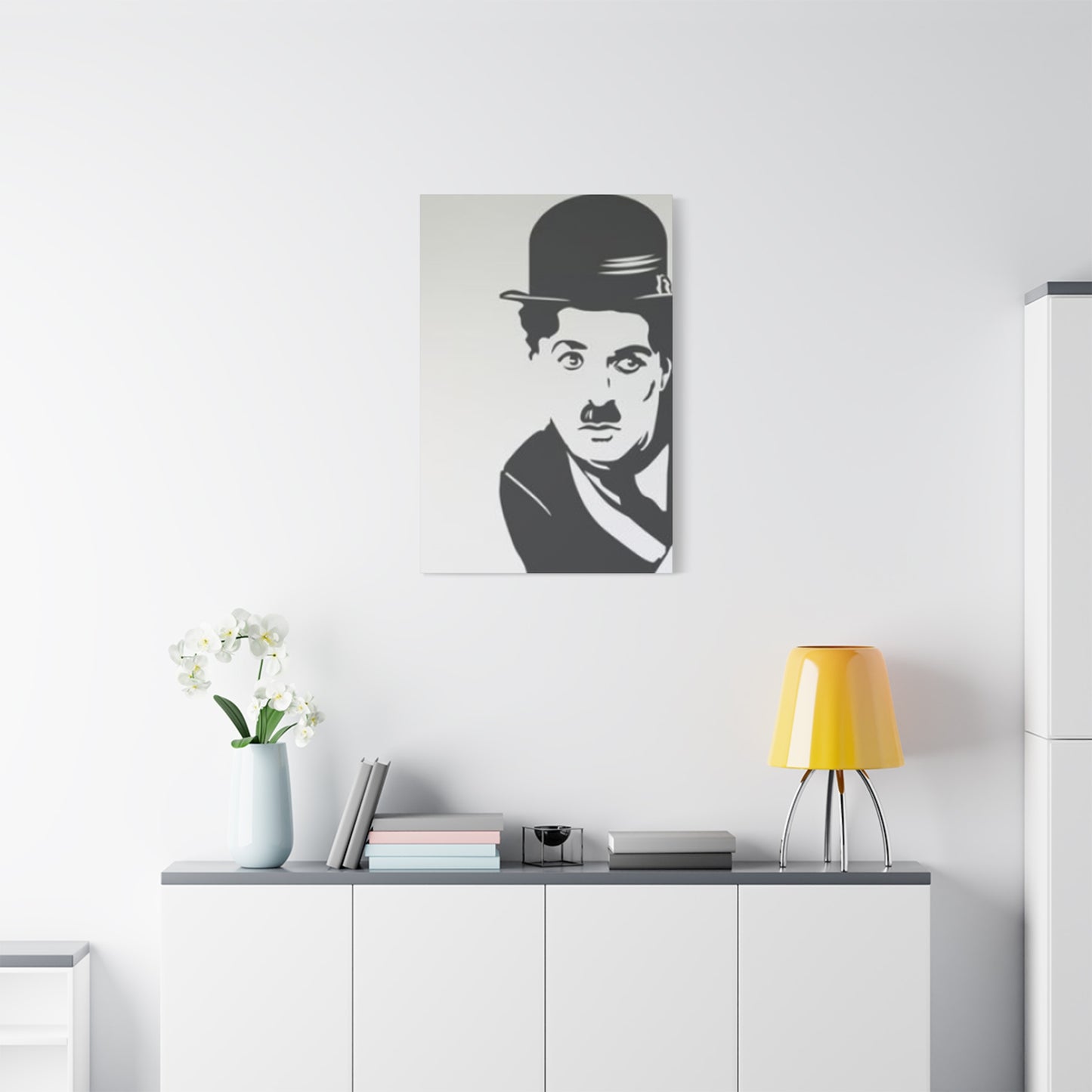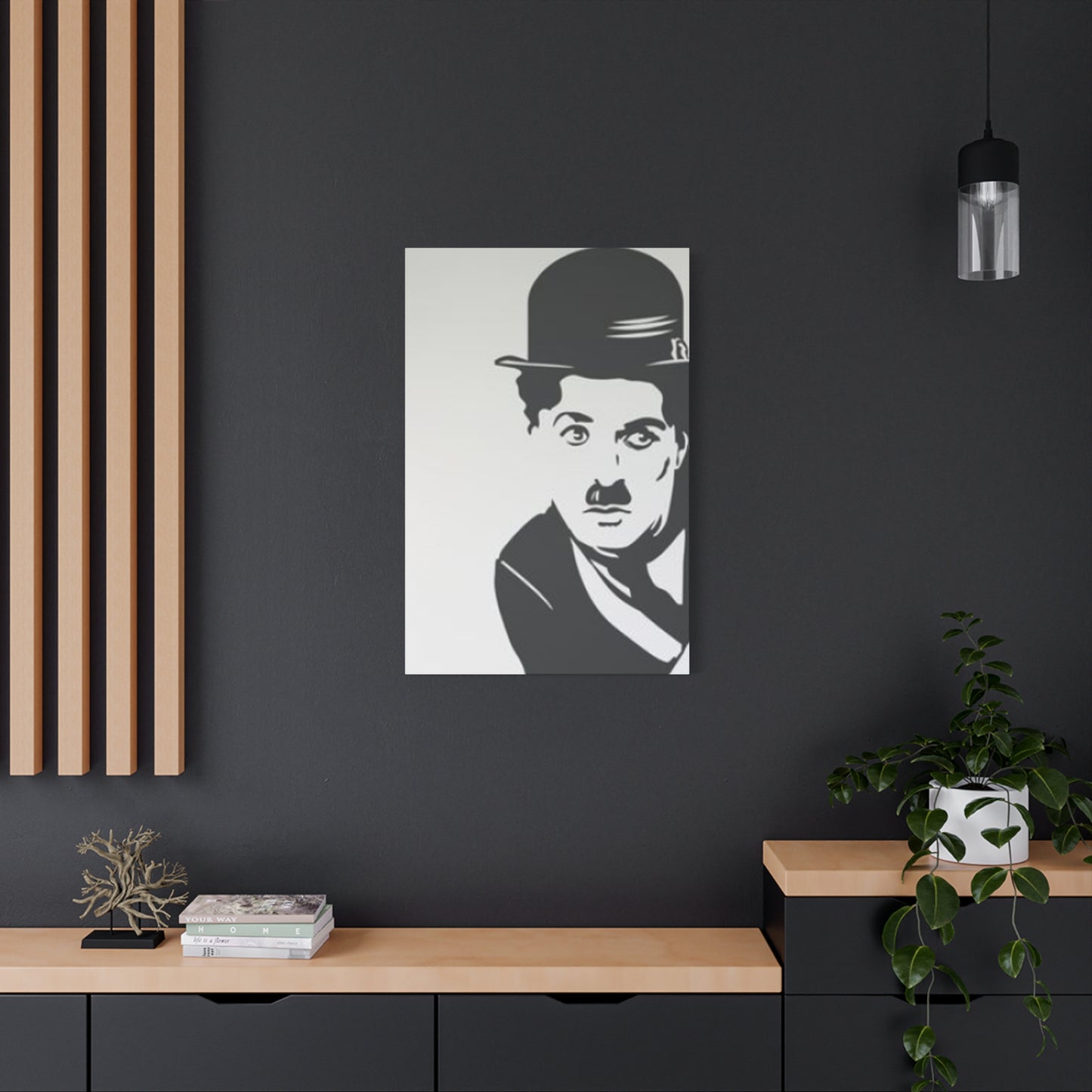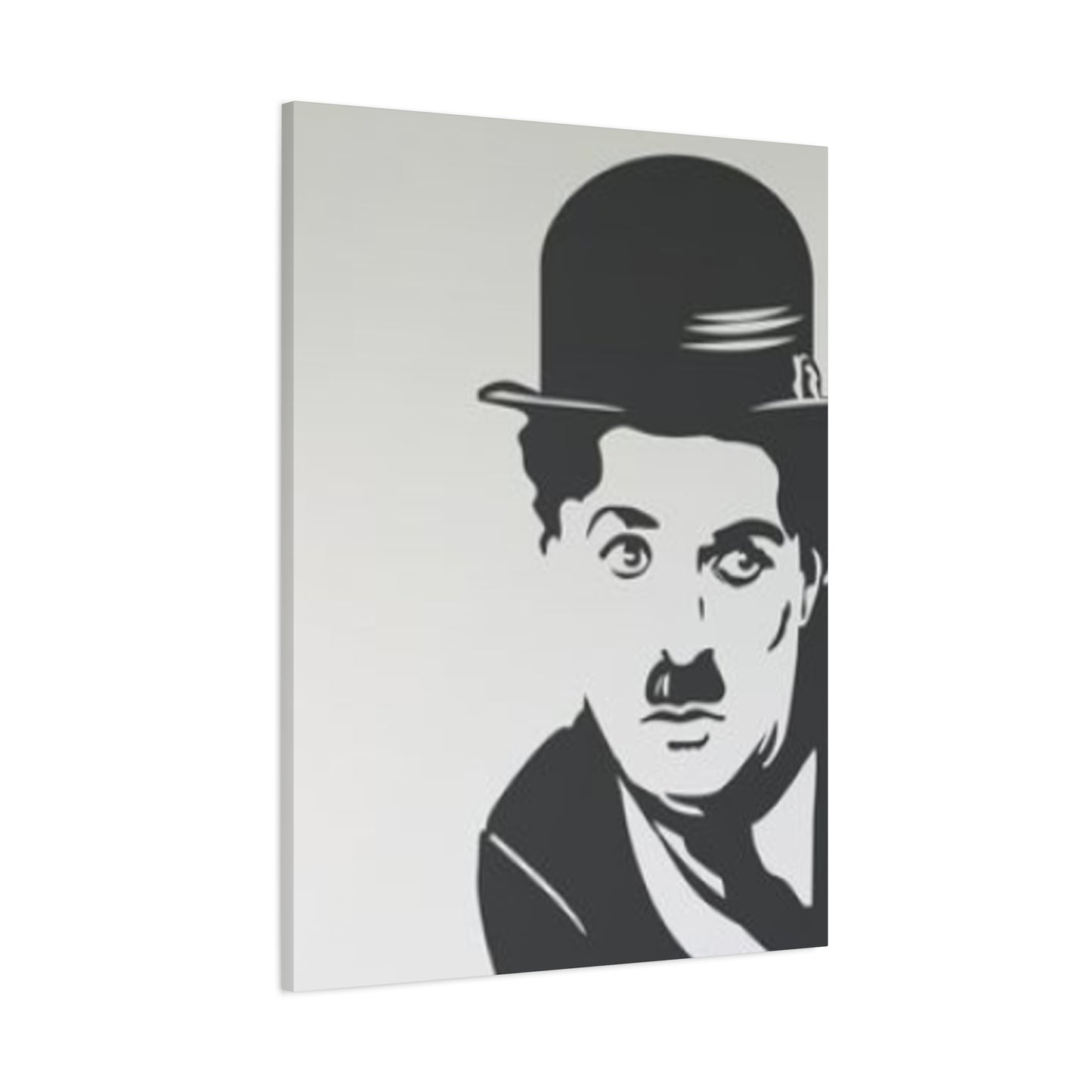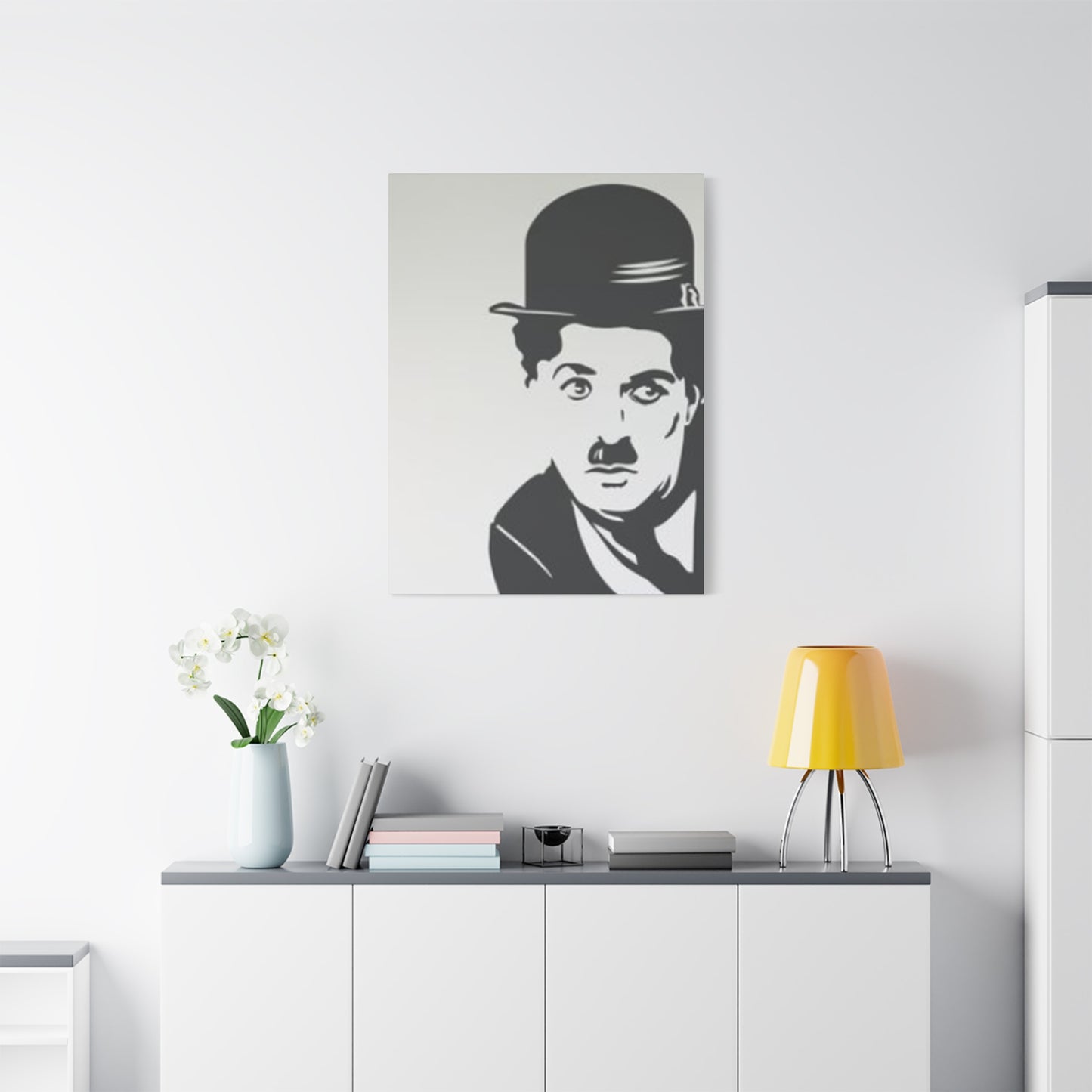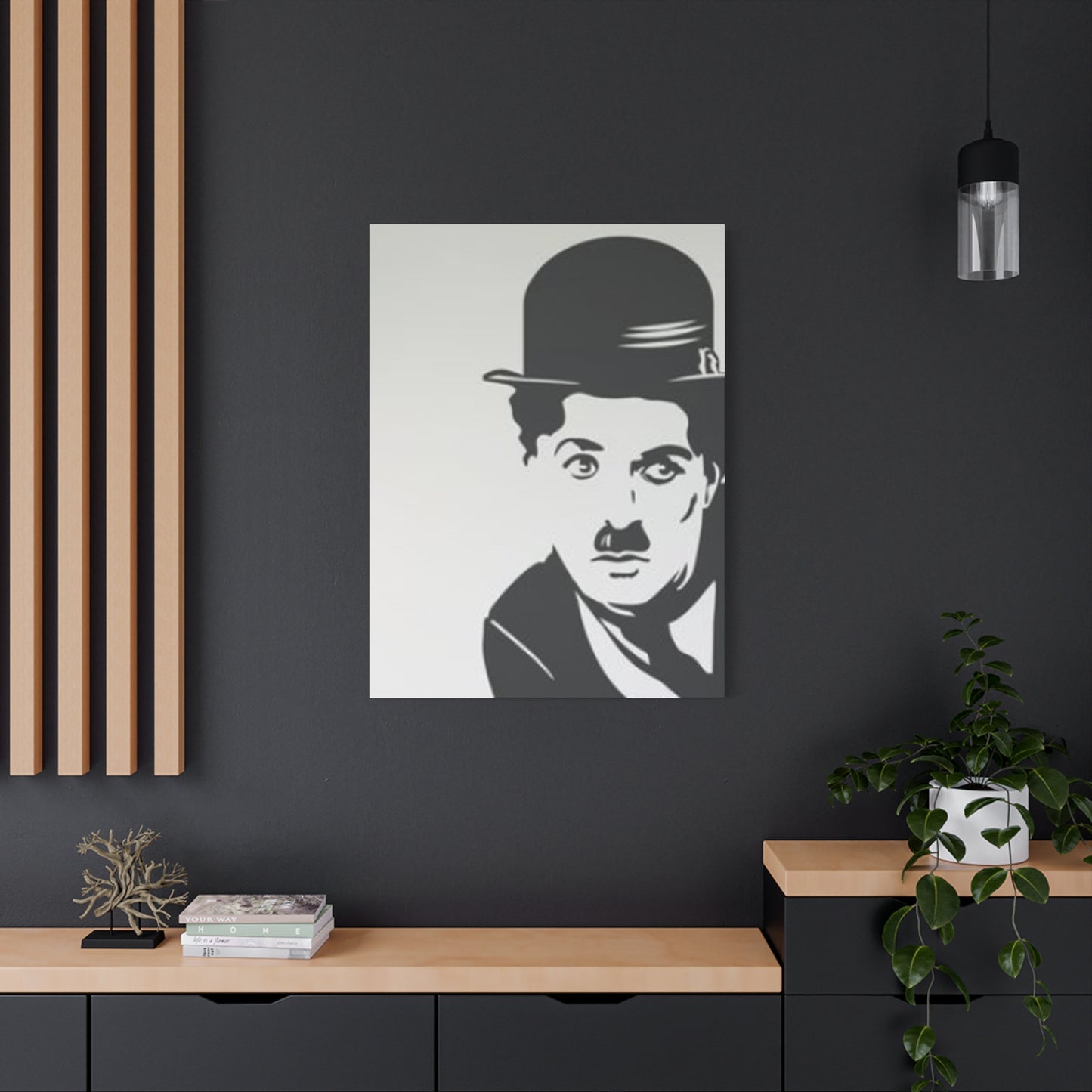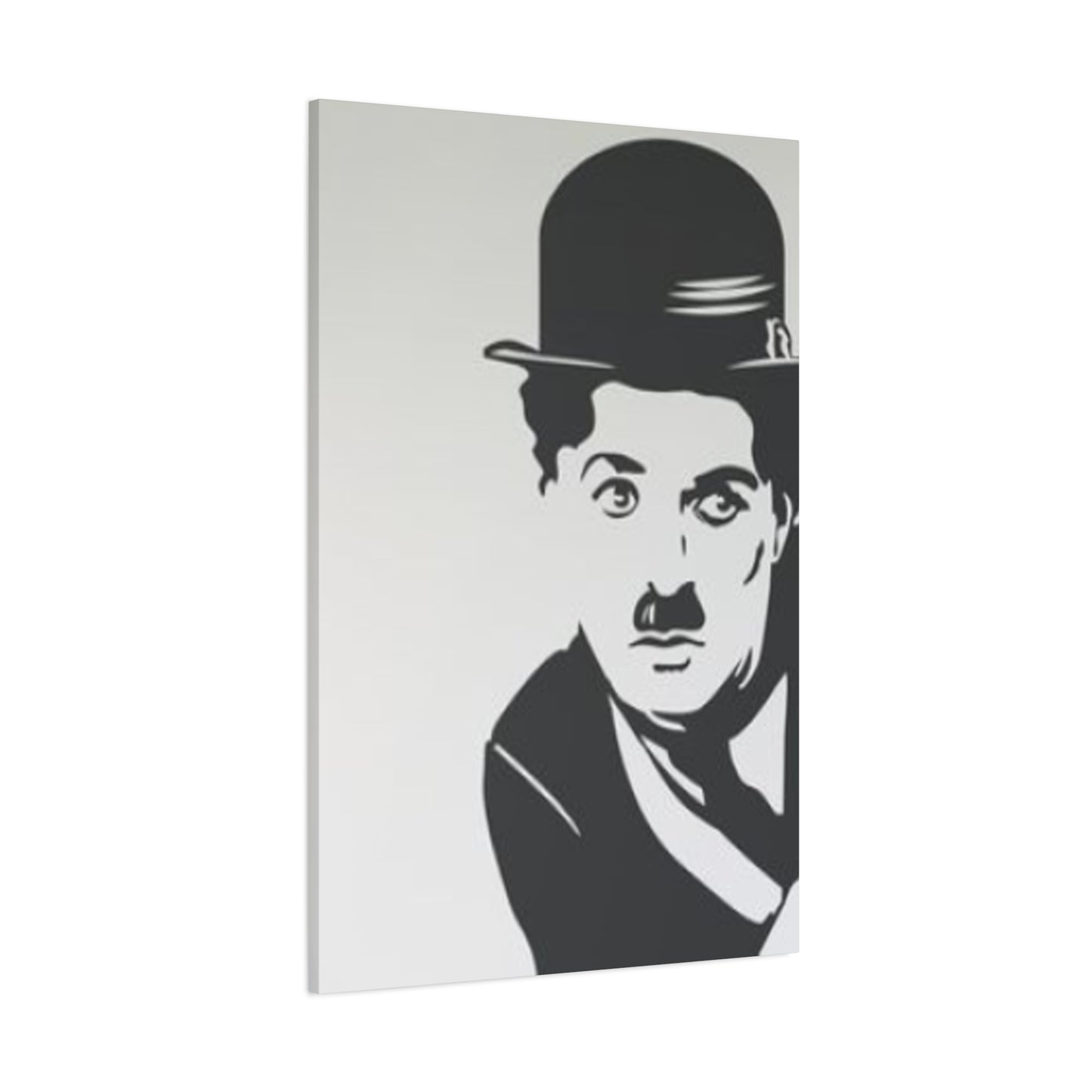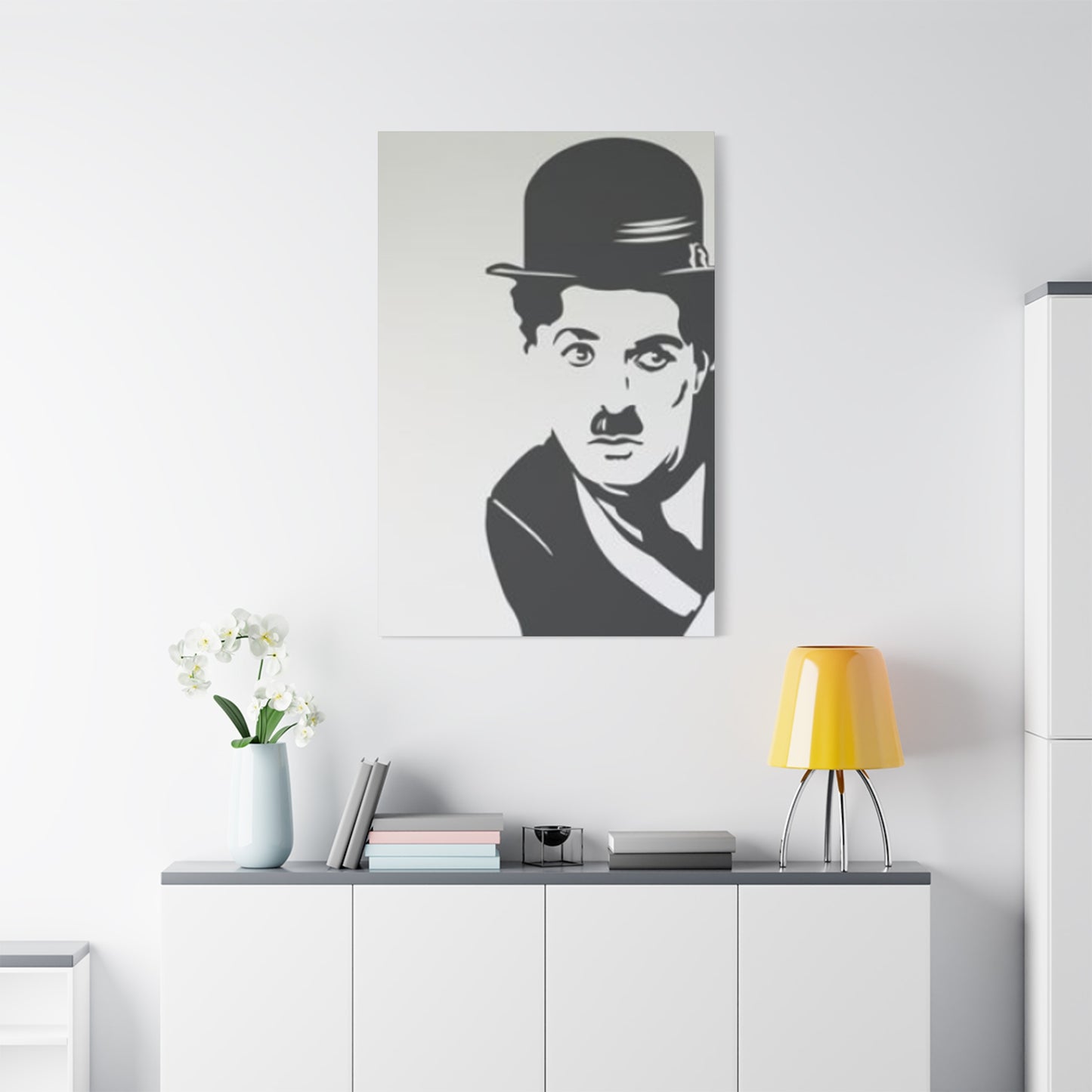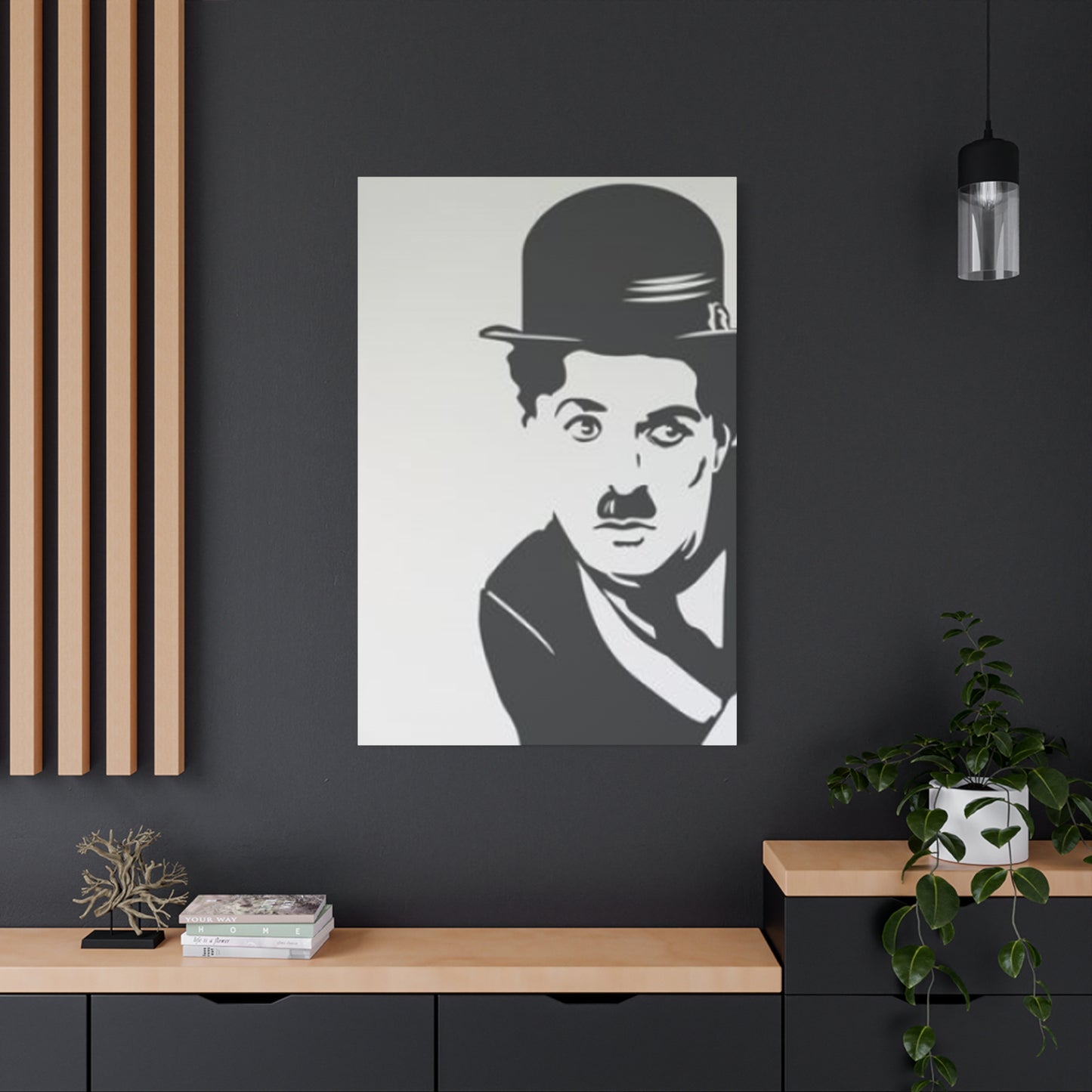Charlie Chaplin Wall art: Timeless Cinema Art for Modern Home Décor
Charlie Chaplin remains one of cinema's most recognizable figures, and his iconic imagery has transcended the silver screen to become a staple in contemporary home decoration. Wall art featuring the legendary silent film star offers homeowners an opportunity to celebrate cinematic history while adding sophisticated artistic elements to their living spaces. Canvas prints showcasing Chaplin's memorable characters, particularly his beloved Tramp persona, have become increasingly popular among art enthusiasts, movie buffs, and interior design aficionados.
The enduring appeal of Charlie Chaplin wall art lies in its ability to capture the essence of a bygone era while maintaining relevance in modern aesthetic contexts. These artistic representations serve as conversation starters, cultural touchstones, and visual reminders of entertainment's golden age. Whether displayed in home theaters, living rooms, offices, or commercial spaces, Charlie Chaplin canvas prints offer a unique blend of nostalgia and artistic sophistication that appeals to diverse audiences across generations.
Historical Significance of Charlie Chaplin in Visual Arts
The artistic representation of Charlie Chaplin extends far beyond simple portrait photography, encompassing a rich tradition of visual interpretation that has evolved over nearly a century. Artists have been captivated by Chaplin's expressive features, iconic costume elements, and the emotional depth conveyed through his performances. The bowler hat, walking cane, oversized shoes, and distinctive mustache have become symbolic elements that immediately evoke recognition and emotional connection.
During Chaplin's career peak in the 1910s and 1920s, commercial artists began creating promotional materials that would later influence contemporary wall art designs. These early artistic interpretations established visual conventions that modern canvas print creators continue to reference and reinterpret. The black and white aesthetic associated with silent films has become a defining characteristic of Charlie Chaplin wall art, though contemporary artists often experiment with color palettes and modern artistic techniques.
The transition from promotional materials to fine art occurred gradually as Chaplin's cultural significance grew beyond entertainment. Museums began acquiring Chaplin-related artwork, legitimizing the subject matter as worthy of serious artistic consideration. This institutional recognition helped establish a market for high-quality reproductions and original works featuring the comedian, paving the way for today's thriving market in Charlie Chaplin canvas prints.
Art historians note that Chaplin's visual appeal stems from his ability to embody universal human experiences through distinctive visual elements. His expressions convey complex emotions that transcend language barriers, making his imagery particularly suitable for artistic interpretation. Contemporary artists working in various media continue to find inspiration in Chaplin's visual legacy, creating works that range from photorealistic portraits to abstract interpretations.
The preservation of Chaplin's visual legacy through wall art serves an important cultural function, introducing younger generations to classical cinema while maintaining connections to entertainment history. Educational institutions often incorporate Charlie Chaplin artwork into curricula focused on film studies, art history, and cultural studies, demonstrating the continued relevance of this imagery in academic contexts.
Modern technology has revolutionized the production and distribution of Charlie Chaplin wall art, making high-quality reproductions accessible to broader audiences. Digital printing techniques allow for unprecedented detail reproduction and color accuracy, while online marketplaces have democratized access to diverse artistic interpretations of Chaplin's iconic imagery.
Popular Charlie Chaplin Artistic Interpretations
Contemporary artists approach Charlie Chaplin imagery through various stylistic lenses, creating diverse interpretations that appeal to different aesthetic preferences and interior design schemes. Pop art interpretations draw inspiration from Andy Warhol's celebrity portraits, utilizing bold colors and repetitive imagery to create striking visual statements. These pieces often feature multiple versions of Chaplin's face in different color combinations, creating dynamic compositions suitable for modern and contemporary interior settings.
Minimalist interpretations focus on essential visual elements, reducing Chaplin's recognizable features to simplified forms and monochromatic color schemes. These artworks appeal to homeowners who prefer clean, uncluttered aesthetic approaches while still wanting to incorporate cultural references into their décor. The simplicity of minimalist Charlie Chaplin art makes it versatile enough to complement various interior design styles without overwhelming existing décor elements.
Street art and graffiti-inspired interpretations bring urban energy to Charlie Chaplin imagery, often incorporating spray paint effects, stencil techniques, and contemporary graphic elements. These pieces appeal to younger demographics and urban living environments, bridging the gap between classical entertainment history and contemporary artistic expression. The rebellious nature of street art aesthetics creates interesting juxtapositions when applied to Chaplin's genteel Tramp character.
Photorealistic interpretations showcase technical artistic skill while paying homage to Chaplin's distinctive features and expressions. These pieces often focus on capturing specific moments from famous films or iconic publicity photographs, requiring exceptional attention to detail and artistic technique. Collectors who appreciate technical excellence often gravitate toward these highly detailed representations.
Abstract interpretations deconstruct Charlie Chaplin's visual elements, reimagining his iconic features through non-representational artistic approaches. These pieces may focus on emotional expression rather than literal representation, using color, form, and composition to evoke feelings associated with Chaplin's performances. Abstract Charlie Chaplin art appeals to viewers who appreciate conceptual artistic approaches and want unique interpretive pieces.
Vintage-style interpretations deliberately evoke the aesthetic characteristics of Chaplin's era, incorporating design elements reminiscent of early 20th-century advertising, poster art, and graphic design. These pieces often feature sepia tones, aged textures, and typography styles associated with the silent film period, creating authentic period atmosphere for viewers seeking historical authenticity.
Mixed media interpretations combine various artistic techniques and materials to create textured, multidimensional representations of Charlie Chaplin. These pieces might incorporate collage elements, different painting media, or three-dimensional components, resulting in unique artworks that offer visual interest from multiple viewing angles and lighting conditions.
Canvas Print Production Techniques and Quality Considerations
The production of high-quality Charlie Chaplin canvas prints involves sophisticated printing technologies and careful attention to material selection, ensuring longevity and visual appeal. Giclée printing has become the gold standard for fine art reproduction, utilizing archival inks and specialized printing equipment to achieve museum-quality results. This process involves spraying microscopic droplets of pigment-based inks onto canvas surfaces, creating smooth color transitions and exceptional detail reproduction.
Canvas material selection significantly impacts the final appearance and durability of Charlie Chaplin wall art. Cotton canvas offers excellent ink absorption and natural texture that enhances artistic authenticity, while polyester canvas provides superior dimensional stability and moisture resistance. Blended materials combine advantages of both fiber types, creating optimal surfaces for various artistic styles and environmental conditions.
Stretching and mounting processes require careful attention to ensure canvas prints maintain proper tension and appearance over time. Professional framers use archival materials and techniques to prevent artwork deterioration, including acid-free mounting boards, conservation-quality adhesives, and protective backing materials. Proper stretching prevents sagging and ensures canvas prints maintain their intended proportions and visual impact.
Color calibration and profile management ensure accurate reproduction of original artwork colors and tones. Professional printing services utilize color management systems that account for canvas material characteristics, ink properties, and viewing environment considerations. This technical precision ensures Charlie Chaplin canvas prints accurately represent original artistic intentions and maintain consistency across production runs.
Protective coatings and treatments can enhance canvas print longevity and appearance, providing resistance to fading, moisture, and environmental contaminants. UV-resistant varnishes help preserve color integrity when artwork is displayed in areas with natural light exposure, while anti-static treatments reduce dust accumulation on canvas surfaces.
Quality control procedures ensure consistency and defect-free production of Charlie Chaplin wall art. Professional print services implement inspection protocols that examine color accuracy, detail reproduction, material integrity, and finishing quality before shipping finished products to customers. These procedures help maintain brand reputation and customer satisfaction.
Custom sizing options allow customers to obtain Charlie Chaplin canvas prints that perfectly fit their intended display spaces and design requirements. Professional printing services can accommodate various dimensions while maintaining proper aspect ratios and image quality, ensuring optimal visual impact regardless of size specifications.
Interior Design Applications and Room Placement
Charlie Chaplin wall art offers versatile decorating possibilities that complement various interior design styles and room functions. In living rooms, large canvas prints can serve as focal points above sofas or mantlepieces, creating conversation areas centered around cinematic history and artistic appreciation. The monochromatic nature of many Charlie Chaplin images makes them particularly suitable for rooms with complex color schemes, as they provide visual interest without introducing conflicting color elements.
Home theater and media rooms provide ideal environments for Charlie Chaplin canvas prints, reinforcing entertainment themes while honoring cinema history. Multiple smaller prints can create gallery walls that showcase different artistic interpretations or various Chaplin characters and expressions. The theatrical nature of these spaces enhances the dramatic impact of Chaplin imagery, creating immersive environments that celebrate entertainment culture.
Office and study spaces benefit from the inspirational qualities of Charlie Chaplin wall art, as the comedian's story embodies creativity, perseverance, and artistic achievement. Professional environments can incorporate Chaplin imagery to demonstrate cultural awareness and appreciation for creative excellence, while home offices can use these pieces to create motivational atmospheres that encourage creative thinking and artistic expression.
Bedroom applications require careful consideration of image content and emotional impact, as Charlie Chaplin's expressive range includes both comedic and melancholic elements. Gentle, smiling portraits work well in bedroom settings, while more intense dramatic expressions might be better suited to public areas of the home. The size and placement of bedroom artwork should complement rather than overwhelm the intimate nature of these personal spaces.
Kitchen and dining areas can accommodate Charlie Chaplin wall art that emphasizes the comedian's jovial, approachable characteristics. Food-related scenes from Chaplin films, such as the famous dinner roll dance from "The Gold Rush," create thematically appropriate artwork for dining spaces while maintaining sophisticated artistic appeal. These applications require careful consideration of humidity and cooking-related environmental factors.
Hallways and staircases provide excellent opportunities for creating Charlie Chaplin gallery displays using multiple smaller canvas prints. Sequential arrangements can tell visual stories or showcase artistic evolution, while varied sizes and styles create dynamic visual experiences for people moving through transitional spaces. These applications make efficient use of otherwise underutilized wall space.
Commercial applications include restaurants, theaters, hotels, and entertainment venues that benefit from Charlie Chaplin's iconic recognition and positive associations. Business owners must consider licensing requirements and copyright considerations when displaying commercial artwork, ensuring compliance with intellectual property regulations while creating appealing customer environments.
Sizing Options and Dimension Considerations
Charlie Chaplin canvas prints are available in numerous sizes to accommodate different space requirements and design objectives, from intimate personal displays to commanding architectural focal points. Small format prints, typically ranging from 8x10 to 16x20 inches, work well for personal spaces, desk displays, and grouped arrangements. These compact sizes allow for affordable art collection building and flexible arrangement options as décor preferences evolve.
Medium format options, generally spanning 18x24 to 24x36 inches, provide substantial visual impact without overwhelming smaller rooms or competing with existing décor elements. These dimensions work particularly well for bedroom displays, office environments, and secondary living areas where artwork should complement rather than dominate the space. Medium format prints offer good balance between visual presence and spatial integration.
Large format Charlie Chaplin canvas prints, typically 30x40 inches and larger, create dramatic focal points suitable for spacious rooms and commercial applications. These substantial pieces require adequate wall space and appropriate lighting to achieve maximum impact, but they reward viewers with impressive detail reproduction and commanding presence. Large format prints work particularly well in modern homes with high ceilings and minimalist décor approaches.
Extra-large and panoramic formats push beyond traditional rectangular proportions, creating unique display opportunities for specific architectural situations. These specialized sizes might accommodate unusual wall dimensions or create immersive viewing experiences that envelop viewers in Charlie Chaplin's cinematic world. Custom sizing services can create these specialized formats for specific installation requirements.
Aspect ratio considerations ensure Charlie Chaplin imagery maintains proper proportions and artistic integrity across different size options. Square formats work well for portrait-oriented compositions and modern interior design schemes, while traditional rectangular proportions accommodate landscape scenes and horizontal arrangements. Panoramic ratios can create cinematic viewing experiences that reference film screen dimensions.
Grouping multiple sizes creates dynamic gallery wall arrangements that add visual interest and flexibility to Charlie Chaplin displays. Mixed sizing allows for hierarchical arrangements that guide viewer attention while accommodating various image types and artistic styles. Professional interior designers often recommend odd numbers of pieces and varied spacing to create visually pleasing arrangements.
Scale relationship between artwork and furniture requires careful consideration to ensure proper visual balance and proportion. Charlie Chaplin canvas prints should complement rather than compete with major furniture pieces, maintaining appropriate size relationships that create cohesive room designs. General guidelines suggest artwork should occupy roughly two-thirds of the wall space above furniture pieces.
Color Schemes and Aesthetic Variations
The color palette options for Charlie Chaplin wall art span from historically accurate black and white reproductions to contemporary interpretations that incorporate vibrant modern color schemes. Traditional monochromatic approaches honor the silent film era's visual characteristics while providing versatile decorating options that complement various interior color schemes. Black and white Charlie Chaplin prints offer timeless appeal that transcends decorating trends and fashion cycles.
Sepia and warm-toned variations evoke vintage photograph aesthetics while adding warmth to interior spaces. These color treatments create nostalgic atmospheres that enhance the historical significance of Charlie Chaplin imagery while providing more visual warmth than stark black and white alternatives. Sepia treatments work particularly well in traditional and rustic interior design contexts.
Contemporary color interpretations transform Charlie Chaplin imagery through modern artistic sensibilities, often incorporating bold primaries, pastels, or monochromatic color schemes that reflect current design trends. Pop art influences might introduce electric blues, vibrant reds, or neon accents that create striking visual statements while maintaining recognizable Chaplin imagery. These colorful interpretations appeal to modern and contemporary interior design preferences.
Metallic and textural treatments add dimensional interest to Charlie Chaplin canvas prints through specialized printing techniques and finishing processes. Gold, silver, or copper accents can highlight specific image elements while creating luxurious visual effects that enhance upscale interior environments. These specialized treatments require careful integration with existing décor elements to avoid overwhelming visual competition.
Custom color matching services allow customers to coordinate Charlie Chaplin wall art with specific interior color schemes, ensuring seamless integration with existing décor elements. Professional printing services can adjust color balances and saturation levels to complement particular paint colors, furniture finishes, or textile selections, creating cohesive room designs that incorporate Chaplin imagery without creating visual conflicts.
Lighting considerations significantly impact color perception and should inform color selection decisions for Charlie Chaplin canvas prints. Natural lighting conditions change throughout the day and seasons, potentially affecting how colors appear in different viewing situations. Artificial lighting types, from warm incandescent to cool LED systems, also influence color perception and should be considered when selecting artwork color treatments.
Limited edition and artist-signed color variations offer collectors opportunities to acquire unique interpretations of Charlie Chaplin imagery. These specialized pieces often feature experimental color treatments or artistic techniques not available in standard reproduction formats, providing exclusivity and potential investment value for serious art collectors and Chaplin enthusiasts.
Framing and Display Options
Framing choices significantly impact the visual presentation and longevity of Charlie Chaplin canvas prints, with options ranging from traditional wood frames to contemporary metal and acrylic systems. Classic wooden frames in natural finishes complement the vintage character of Chaplin imagery while providing traditional artistic presentation that appeals to conventional decorating sensibilities. Wood frame options include various species, stain colors, and profile shapes to accommodate different interior design preferences.
Metal framing systems offer sleek, contemporary presentation options that work particularly well with modern interpretations of Charlie Chaplin artwork. Aluminum and steel frames provide clean lines and minimal visual interference with artwork content, while finishes ranging from brushed silver to matte black accommodate various decorating schemes. Metal frames also offer superior durability and dimensional stability compared to traditional wood alternatives.
Floating frame systems create sophisticated presentation effects by suspending canvas prints within frame boundaries, producing shadow effects that enhance dimensional appearance. These specialized mounting systems work particularly well with gallery-style displays and contemporary interior environments where clean, professional presentation is desired. Floating frames accommodate various thickness canvases while maintaining consistent presentation appearance.
Gallery wrap installations eliminate traditional framing entirely, wrapping artwork around stretcher bar sides to create finished presentations suitable for immediate hanging. This approach emphasizes artwork content while minimizing visual distractions, creating clean, modern displays that work well in contemporary settings. Gallery wraps require careful edge treatment to ensure professional appearance from all viewing angles.
Matting options provide visual separation between Charlie Chaplin imagery and frame elements while adding proportional balance to overall presentation. Archival matting materials prevent acid migration and chemical deterioration while various color and texture options allow for customization to complement specific artworks and interior environments. Multiple mat layers can create sophisticated depth effects and emphasize artwork importance.
Shadow box and dimensional framing approaches accommodate mixed media Charlie Chaplin artwork that includes three-dimensional elements or requires protection from environmental contact. These specialized framing systems provide space for dimensional elements while maintaining visual access to artwork content, creating museum-quality presentation suitable for valuable or unique pieces.
Professional installation services ensure proper mounting and positioning of framed Charlie Chaplin canvas prints, taking into account wall construction, weight distribution, lighting conditions, and viewing angles. Expert installers can recommend appropriate hardware and mounting techniques for various wall types and artwork weights while ensuring level, secure installation that protects both artwork and wall surfaces.
Maintenance and Care Instructions
Proper maintenance extends the life and preserves the appearance of Charlie Chaplin canvas prints, requiring attention to environmental factors, cleaning procedures, and handling protocols. Environmental control represents the most important aspect of canvas print preservation, as temperature fluctuations, humidity changes, and direct sunlight exposure can cause significant deterioration over time. Ideal display conditions include stable temperatures between 65-70 degrees Fahrenheit and relative humidity levels maintained between 45-55 percent.
Direct sunlight exposure poses the greatest threat to canvas print longevity, causing color fading, material degradation, and surface deterioration. Charlie Chaplin wall art should be positioned away from windows or protected with UV-filtering glass and window treatments. If natural light exposure cannot be avoided, UV-resistant protective coatings and archival inks can provide additional protection against photochemical damage.
Dust accumulation affects both appearance and long-term preservation of canvas prints, requiring regular but gentle cleaning maintenance. Soft, natural bristle brushes or microfiber cloths can remove surface dust without abrading canvas textures or disturbing ink deposits. Cleaning should proceed from top to bottom using light, consistent strokes that follow canvas weave patterns rather than working against material grain.
Humidity control prevents canvas dimensional changes and mold growth that can permanently damage Charlie Chaplin artwork. Excessive moisture can cause canvas expansion, stretcher bar warping, and mold development, while insufficient humidity can cause material brittleness and cracking. Dehumidifiers or humidifiers may be necessary in extreme climate conditions to maintain optimal preservation environments.
Storage requirements for Charlie Chaplin canvas prints not currently displayed include flat positioning, protective wrapping, and climate-controlled environments. Rolled storage can damage stretched canvases and should be avoided unless specifically designed for rolling. Acid-free tissue paper, archival boxes, and climate-controlled storage areas help preserve artwork during extended storage periods.
Professional cleaning and restoration services can address more serious maintenance issues that exceed homeowner capabilities. Conservation specialists have access to specialized equipment and materials designed for artwork preservation, including controlled cleaning systems, color matching capabilities, and structural repair techniques. Professional intervention may be necessary for valuable or damaged pieces.
Insurance and documentation considerations include photographing artwork for insurance purposes, maintaining purchase receipts and authenticity certificates, and updating homeowner insurance policies to reflect artwork values. Professional appraisals may be necessary for valuable pieces, while documentation helps establish provenance and authenticity for potential resale or insurance claims.
Historical Evolution of Chaplin Imagery in Art
The artistic interpretation of Charlie Chaplin has evolved dramatically since his emergence as a cultural icon in the early 20th century, reflecting changing artistic movements, technological capabilities, and cultural perspectives. Early commercial art featuring Chaplin focused primarily on promotional purposes, creating poster designs and publicity materials that established visual conventions still referenced in contemporary artwork. These initial artistic interpretations emphasized Chaplin's comedic persona while developing the iconographic elements that would define his visual legacy.
During the 1920s and 1930s, fine artists began incorporating Charlie Chaplin imagery into serious artistic works, recognizing his cultural significance beyond entertainment value. Expressionist and surrealist artists found inspiration in Chaplin's ability to convey complex emotions through physical expression, creating artworks that explored themes of alienation, social commentary, and human condition. These early fine art interpretations elevated Chaplin imagery from commercial application to legitimate artistic subject matter.
The mid-20th century brought pop art movement influences to Charlie Chaplin representation, with artists like Andy Warhol incorporating celebrity imagery into commentary about mass culture and media influence. This period established precedents for contemporary artists who continue to examine celebrity culture through Chaplin imagery, using his iconic status to explore broader cultural themes and artistic concepts.
Modern digital technologies have revolutionized artistic possibilities for Charlie Chaplin representation, enabling unprecedented detail reproduction, color manipulation, and creative interpretation. Digital artists can now combine traditional artistic techniques with technological capabilities, creating hybrid works that honor historical artistic traditions while embracing contemporary creative possibilities. These technological advances have democratized artistic creation while expanding aesthetic possibilities.
Contemporary street art and urban art movements have embraced Charlie Chaplin imagery as a symbol of creative rebellion and artistic authenticity. Graffiti artists and muralists often incorporate Chaplin references into larger compositions that comment on social issues, artistic freedom, and cultural identity. These applications demonstrate the continued relevance of Chaplin imagery in contemporary artistic discourse.
International artistic perspectives have contributed diverse cultural interpretations of Charlie Chaplin imagery, reflecting different aesthetic traditions and cultural values. Asian artists might emphasize different facial expressions or incorporate traditional artistic techniques, while European artists might focus on historical or political interpretations. These diverse perspectives enrich the global artistic legacy surrounding Chaplin imagery.
Academic and institutional recognition of Charlie Chaplin artwork has legitimized the subject matter within art historical contexts, with museums and galleries regularly featuring Chaplin-related exhibitions and acquisitions. This institutional support has created markets for serious artistic work while educating public audiences about the intersection between entertainment history and artistic expression.
Aspects of Canvas Print Production
The technical production of high-quality Charlie Chaplin canvas prints involves sophisticated processes that ensure color accuracy, detail reproduction, and material longevity. Digital image preparation begins with high-resolution scanning or photography of original artworks, followed by color correction and enhancement procedures that optimize images for specific printing technologies and canvas materials. Professional image processing software allows technicians to adjust contrast, saturation, and sharpness parameters while maintaining artistic integrity.
Printer calibration and color management systems ensure consistent reproduction across multiple printing sessions and different equipment configurations. Professional printing facilities utilize spectrophotometers and colorimeters to measure and adjust printer output, creating standardized color profiles that account for ink characteristics, canvas material properties, and environmental conditions. These technical procedures ensure Charlie Chaplin canvas prints maintain consistent appearance regardless of production timing or equipment variations.
Ink selection significantly impacts both appearance and longevity of canvas prints, with pigment-based archival inks providing superior fade resistance compared to dye-based alternatives. Professional-grade printing facilities invest in high-quality ink systems that offer wide color gamuts, smooth gradation capabilities, and documented lightfastness ratings. These premium inks justify higher production costs through superior longevity and color accuracy.
Canvas preparation and priming processes ensure optimal ink adhesion and prevent deterioration over time. Professional canvas materials receive specialized coatings that optimize ink absorption while preventing bleed-through or color shifting. Quality control procedures verify canvas consistency and defect-free surfaces before printing begins, ensuring finished products meet professional standards.
Printing resolution and dot pattern configurations affect detail reproduction and overall image quality in Charlie Chaplin canvas prints. Higher resolutions enable finer detail reproduction but require longer printing times and increased file sizes, while optimized dot patterns minimize visible printing artifacts while maximizing color accuracy. Professional printing services balance these technical considerations to achieve optimal results for specific image types and viewing distances.
Post-printing processes include quality inspection, protective coating application, and preparation for stretching or mounting. Professional facilities implement multi-step inspection procedures that examine color accuracy, detail reproduction, and material integrity before products proceed to finishing stages. These quality control measures help ensure customer satisfaction and maintain professional reputations.
Packaging and shipping considerations protect finished Charlie Chaplin canvas prints during transportation while presenting products professionally to customers. Specialized packaging materials prevent folding, moisture exposure, and surface damage during shipping, while professional presentation enhances customer experience and perceived value. Proper packaging also facilitates return processes and customer service requirements.
Artistic Styles and Movement Influences
Charlie Chaplin canvas prints reflect influences from various artistic movements and stylistic approaches, creating diverse visual interpretations that appeal to different aesthetic preferences and cultural backgrounds. Realist traditions emphasize accurate representation of Chaplin's physical features and expressions, often based on iconic photographs or film stills. These approaches require exceptional technical skill and attention to detail, resulting in artworks that celebrate both artistic craftsmanship and Chaplin's visual legacy.
Impressionist influences appear in Charlie Chaplin artwork through emphasis on light, color, and emotional impression rather than precise detail reproduction. These interpretations might focus on capturing the essence of Chaplin's personality or the atmosphere of his performances rather than creating photographic accuracy. Impressionist-style Chaplin art often features loose brushwork, vibrant color palettes, and emphasis on emotional expression over literal representation.
Expressionist approaches to Charlie Chaplin imagery emphasize emotional content and psychological interpretation over realistic representation. These artworks might exaggerate facial features, use distorted proportions, or incorporate symbolic elements to convey deeper meanings about Chaplin's cultural significance or artistic impact. Expressionist Charlie Chaplin art appeals to viewers interested in psychological and emotional artistic content.
Abstract interpretations deconstruct Charlie Chaplin imagery into geometric forms, color relationships, and compositional elements that suggest rather than literally represent the comedian. These approaches might focus on the rhythm and movement associated with Chaplin's performances or the emotional impact of his cultural presence. Abstract Chaplin art challenges viewers to engage with the subject matter through conceptual rather than literal understanding.
Pop art influences transform Charlie Chaplin imagery through commercial art techniques, repetitive imagery, and bold color schemes that comment on celebrity culture and mass media influence. These interpretations often reference advertising aesthetics, comic book styles, or consumer product design, creating artworks that examine Chaplin's role in popular culture development. Pop art Charlie Chaplin pieces appeal to collectors interested in cultural commentary and contemporary artistic approaches.
Minimalist interpretations reduce Charlie Chaplin imagery to essential visual elements, eliminating unnecessary details while maintaining recognizable characteristics. These artworks might focus on silhouette recognition, iconic costume elements, or simplified facial features that immediately evoke Chaplin without extensive detail reproduction. Minimalist approaches appeal to modern interior design preferences and contemporary aesthetic sensibilities.
Surrealist influences appear in Charlie Chaplin artwork through dreamlike imagery, impossible situations, and symbolic content that explores subconscious associations with the comedian's cultural impact. These interpretations might combine Chaplin imagery with unexpected elements, creating thought-provoking compositions that invite multiple interpretations and deeper contemplation about entertainment's role in human psychology.
Customer Demographics and Market Analysis
The market for Charlie Chaplin wall art and canvas prints encompasses diverse demographic segments with varying motivations for purchase and display. Film enthusiasts represent a core customer group, including both casual movie fans and serious cinema historians who appreciate Chaplin's artistic contributions and cultural significance. These customers often seek historically accurate representations and high-quality reproductions that honor Chaplin's legacy while complementing their existing entertainment-related collections.
Art collectors constitute another important demographic segment, ranging from casual decorating enthusiasts to serious investors who view Charlie Chaplin artwork as both aesthetic enhancement and potential financial investment. These customers typically prioritize artistic quality, authenticity documentation, and limited edition availability when making purchase decisions. Collector demographics span multiple age groups but tend toward higher income levels and educational backgrounds.
Interior design professionals represent a growing market segment that incorporates Charlie Chaplin wall art into commercial and residential projects. These customers require reliable sourcing, custom sizing options, and professional-quality products that meet client expectations and project deadlines. Design professionals often purchase multiple pieces or coordinate group installations, making them valuable customers for specialized printing services.
Age demographics for Charlie Chaplin artwork span multiple generations, with older customers often motivated by personal nostalgia and cultural memory, while younger buyers are attracted to vintage aesthetics and iconic imagery recognition. Middle-aged customers frequently purchase Charlie Chaplin art as sophisticated décor elements that demonstrate cultural awareness and artistic appreciation. Each age group brings different aesthetic preferences and price sensitivity considerations.
Geographic market variations reflect cultural differences in Charlie Chaplin recognition and appreciation, with established markets in North America and Europe complemented by growing interest in Asian and other international markets. Urban areas typically show higher demand for Charlie Chaplin artwork due to greater cultural institution presence and higher disposable income levels, while rural markets may require different marketing approaches and price points.
Commercial customers include restaurants, hotels, theaters, and other entertainment venues that use Charlie Chaplin imagery to create thematic environments and cultural atmosphere. These business customers often require licensing compliance, bulk pricing, and installation support services. Commercial applications may involve larger format pieces or multiple coordinated installations that require specialized production capabilities.
Online versus traditional retail preferences vary among customer demographics, with younger buyers generally preferring online shopping for convenience and selection, while older customers may prefer physical gallery visits and personal consultation services. Successful retailers often employ multichannel approaches that accommodate different customer preferences while maintaining consistent brand presentation and customer service standards.
Pricing Factors and Value Considerations
The pricing of Charlie Chaplin canvas prints reflects multiple factors including production costs, artistic quality, size specifications, and market positioning strategies. Basic reproduction prints utilizing standard materials and production techniques typically occupy lower price tiers, making Charlie Chaplin artwork accessible to budget-conscious customers while maintaining acceptable quality standards. These entry-level options serve important market segments while establishing brand recognition and customer relationships.
Premium and limited edition Charlie Chaplin canvas prints command higher prices through superior materials, specialized production techniques, and exclusivity positioning. These products might feature hand-enhanced details, archival materials, artist signatures, or limited production runs that justify premium pricing through enhanced value propositions. Premium positioning appeals to serious collectors and customers seeking distinctive art pieces.
Custom sizing and personalization services add value while increasing pricing due to specialized production requirements and lower production volumes. Customers willing to pay premium prices for custom Charlie Chaplin artwork typically receive enhanced service levels, consultation support, and guaranteed satisfaction policies that justify additional costs through superior customer experience.
Licensing and copyright considerations can significantly impact pricing when legitimate reproduction rights must be secured from estate representatives or rights holders. Properly licensed Charlie Chaplin artwork provides legal compliance assurance while supporting continued preservation of Chaplin's cultural legacy. Unlicensed reproductions may offer lower prices but expose customers to potential legal risks and ethical concerns.
Artist collaboration and original interpretation pieces command premium prices through unique artistic vision and creative interpretation rather than simple reproduction. These pieces appeal to customers seeking distinctive artworks that combine Chaplin imagery with contemporary artistic expression, creating unique pieces unavailable through standard reproduction channels.
Production volume and economies of scale influence pricing across different market tiers, with high-volume reproductions achieving lower per-unit costs while specialized or limited production runs require higher pricing to recover production investments. Understanding these economic factors helps customers make informed decisions about quality versus price trade-offs.
Market comparison and competitive analysis help customers evaluate pricing fairness while identifying value opportunities across different suppliers and product categories. Successful retailers provide transparent pricing information and value explanations that help customers understand cost factors while making confident purchase decisions. Educational pricing approaches build customer trust while supporting premium positioning strategies.
Installation and Hanging Guidelines
Proper installation of Charlie Chaplin canvas prints ensures both visual impact and long-term preservation while protecting wall surfaces and artwork integrity. Wall assessment procedures should evaluate structural capacity, surface conditions, and environmental factors that might affect installation success and artwork longevity. Different wall types, from drywall to masonry, require specific hardware and techniques to ensure secure, level installation.
Hanging height recommendations follow established art display guidelines while accommodating specific room characteristics and viewing purposes. Standard guidelines suggest artwork center points at 57-60 inches from floor level, but adjustments may be necessary for furniture relationships, ceiling heights, and intended viewing distances. Charlie Chaplin canvas prints displayed above seating areas require careful height calculation to ensure comfortable viewing angles.
Hardware selection depends on artwork weight, wall construction, and desired adjustability options. Professional picture hanging hardware includes wall anchors, security systems, and leveling mechanisms designed for different weight categories and wall types. Quality hardware prevents artwork damage while ensuring secure mounting that protects both walls and valuable art pieces.
Lighting considerations significantly impact the visual presentation and preservation of Charlie Chaplin canvas prints, requiring careful evaluation of natural and artificial light sources. Proper lighting enhances artwork appreciation while avoiding damaging UV exposure and heat generation. Professional lighting systems designed for artwork display offer optimal illumination while providing protective benefits.
Group installation and gallery wall arrangements require additional planning to achieve visually pleasing compositions and balanced presentations. Multiple Charlie Chaplin pieces can create dynamic displays through varied sizes, spacing relationships, and thematic coordination. Professional installation services can provide layout planning and execution expertise for complex arrangements.
Security considerations become important for valuable Charlie Chaplin artwork, particularly in commercial settings or areas with high public access. Security hanging systems, alarm integration, and theft-resistant mounting options provide protection while maintaining accessibility for legitimate viewing and maintenance purposes. Insurance requirements may mandate specific security measures for valuable pieces.
Professional installation services offer expertise and insurance coverage for valuable or challenging installations, particularly beneficial for heavy pieces, difficult wall conditions, or complex group arrangements. Professional installers possess specialized tools, experience with various wall types, and insurance coverage that protects both customers and artwork during installation processes.
Cultural Impact and Educational Applications
Charlie Chaplin wall art serves important educational functions by preserving and transmitting cultural knowledge about cinema history, artistic development, and social commentary embedded in Chaplin's work. Educational institutions frequently incorporate Chaplin imagery into curricula covering film studies, art history, social studies, and cultural analysis, using visual art as accessible entry points for complex academic topics. These applications demonstrate the continued relevance of Chaplin's cultural contributions.
Museum and gallery exhibitions regularly feature Charlie Chaplin artwork as part of broader examinations of entertainment history, artistic development, or cultural analysis. These institutional presentations legitimize Chaplin imagery as serious artistic subject matter while educating public audiences about the intersection between popular entertainment and fine art traditions. Museum-quality presentations set standards for commercial artwork while building public appreciation.
Cultural preservation efforts utilize Charlie Chaplin wall art to maintain connections with historical entertainment traditions and artistic practices that might otherwise be forgotten by contemporary audiences. These preservation activities ensure younger generations can access and appreciate cultural heritage while understanding historical contexts that shaped modern entertainment and artistic expression.
International cultural exchange programs often incorporate Charlie Chaplin imagery as universally recognizable symbols that transcend language barriers while facilitating discussions about artistic expression, social commentary, and cultural communication. Chaplin's global recognition makes his imagery particularly valuable for cross-cultural educational programming and international artistic collaboration.
Social commentary embedded in Charlie Chaplin's original work continues to resonate through contemporary artistic interpretations that address current social issues, economic inequality, and political concerns. Modern artists use Chaplin imagery to connect historical social criticism with contemporary problems, creating artworks that bridge temporal gaps while maintaining relevant social commentary.
Therapeutic and wellness applications utilize Charlie Chaplin imagery in healthcare settings, senior care facilities, and mental health treatment programs where familiar, positive imagery can provide comfort and stimulate positive emotional responses. The universally appealing nature of Chaplin's comedic persona makes his imagery particularly suitable for therapeutic environments.
Community building and cultural identity formation benefit from Charlie Chaplin wall art installations that create shared reference points and conversation opportunities within public spaces. These applications help build social connections while celebrating cultural heritage and artistic appreciation within community contexts.
Conclusion
Charlie Chaplin wall art offers a timeless bridge between classic cinema and modern home décor, blending nostalgia with contemporary style. As one of the most iconic figures in film history, Chaplin’s instantly recognizable image brings a unique charm and character to any living space. His expressive face, signature bowler hat, and playful yet profound persona evoke emotions that transcend generations, making his art as relevant today as it was nearly a century ago.
Incorporating Charlie Chaplin wall art into your home not only pays tribute to the golden age of silent film but also adds a sophisticated yet whimsical touch to your décor. Whether you prefer minimalist black-and-white portraits or vibrant, pop-art-inspired pieces, Chaplin’s image lends itself to a variety of styles, effortlessly complementing both modern and classic interiors.
Beyond its aesthetic appeal, Chaplin’s art symbolizes resilience, humor, and humanity—qualities that resonate deeply in today’s fast-paced world. Displaying his image is a subtle reminder of the power of laughter and compassion in overcoming adversity, making it an inspiring focal point for any room.
Ultimately, Charlie Chaplin wall art captures the spirit of timeless cinema while enhancing the ambiance of contemporary homes. It invites viewers to reflect on the enduring influence of film and the universal themes that Chaplin so brilliantly portrayed. For film enthusiasts and art lovers alike, this wall art is more than decoration—it’s a celebration of cultural history, artistic expression, and the magic of storytelling that continues to inspire us all.

















